Vol. 1. Nikon F4
Looking back over Nikon models !?
Compared to other Japanese camera manufacturers, Nikon Corporation has considerably more to discuss --- for its history extends from the Nikon I (originally "Nikon Camera") to the Nikon F5.
Starting with the official history of Nikon Corporation*, there is an unending flood of books and magazine specials written by researchers specializing in different fields.
Even though Nikon Corporation was a late starter in camera development after World War II, the superiority of its products was soon recognized by the camera industry. The dramatic expansion of Nikon into a global company is a fascinating story, and provides the fuel for this range of historical works.
The Nikon camera story begins with the release of the Nikon I in 1948, while the F5, its direct descendant, made its appearance in April 1996. I think that taking a chronological look over these 50 years of history and various model changes is a fascinating task.
But what happens if you trace backwards ?
That's what I've done with this article --- review Nikon camera history in reverse chronological order, examining the links between models and the characteristics of each product.
I would like to focus on the Nikon F4, rather than the F5, because the latter is too new to discuss from a historical perspective.
- *Before April 1988, Nikon Corporation was known as Nippon Kogaku K.K.
What then, were the basic concepts in the F4's development ?
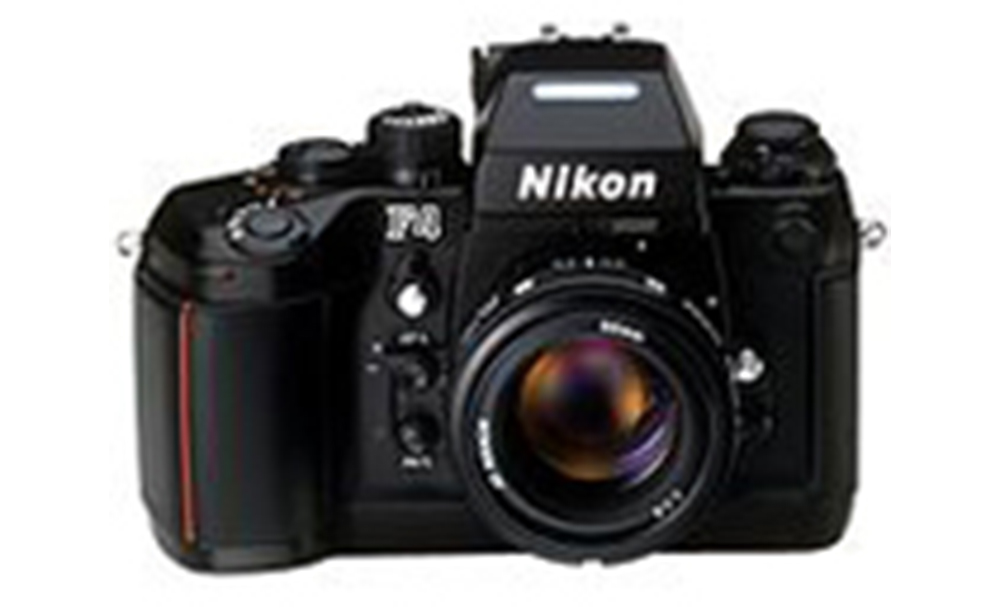
Nikon announced the debut of the Nikon F4 in Japan (Nippon), the U.S. and Germany in September 1988, and released it in December of that year.
It immediately gained excellent reviews from users, and became the camera of choice for professionals and other serious photographers around the world.
The F4 is still preeminent on the "front line" of action today, 10 years later, as its performance-driven features continue to distinguish it even among the wide range of AF SLRs available.
Demand for a faster flash sync speed and the Nikon F3
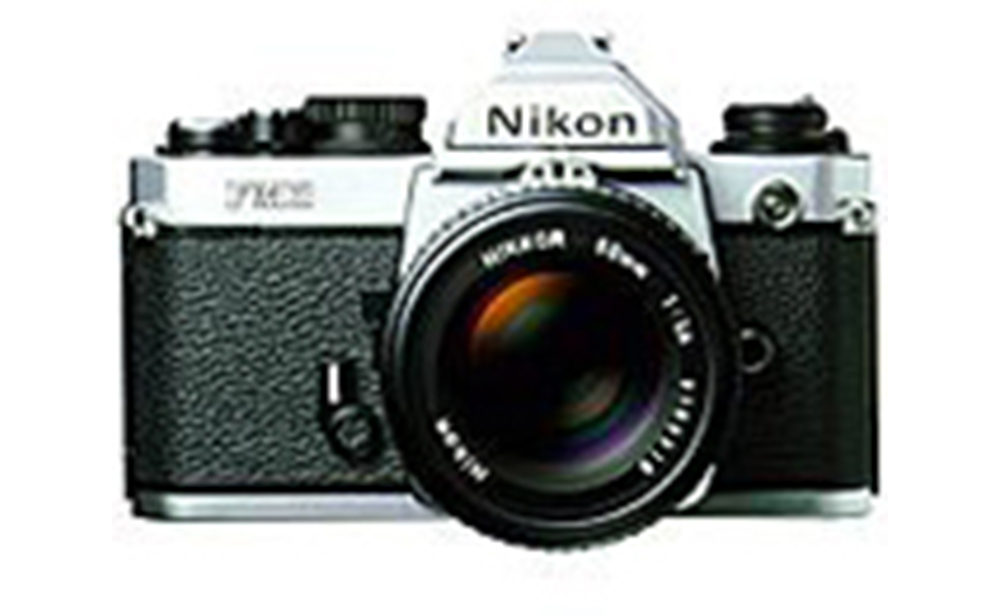
To find out, let's go back to March, 1982. That year, the Nikon FM2 was released, and remains popular today as a reliable manual, fully mechanical camera with a rich selection of basic functions.
In addition to other features, the early FM2 offered a flash sync speed (that is, the shutter speed possible when used with a Speedlight) of 1 / 200 sec. This surpassed the previous 20-year standard of 1 / 125 sec. and was made possible by Nikon's superb titanium (Ti) technology.
A high flash sync speed reduces the possibility of getting an overexposed background or blurred subject in flash photography. As a result of the FM2's faster flash sync speed, advanced daylight synchro photography became much easier.
Then in Mar. 1983, this high-speed shutter technology was further improved and used in the Nikon FE2 to achieve shutter speeds of 1 / 250 sec. This feature was a big hit with professionals and advanced amateurs, as it offered all the features needed in a high-grade SLR camera.
However, at that time, the high-end F3 camera's flash sync speed was just 1 / 80 sec. Gradually, Nikon received a sharp rise in the number of customer requests for a new F3-class camera with high flash sync speed capability.
The development of the matrix metering system
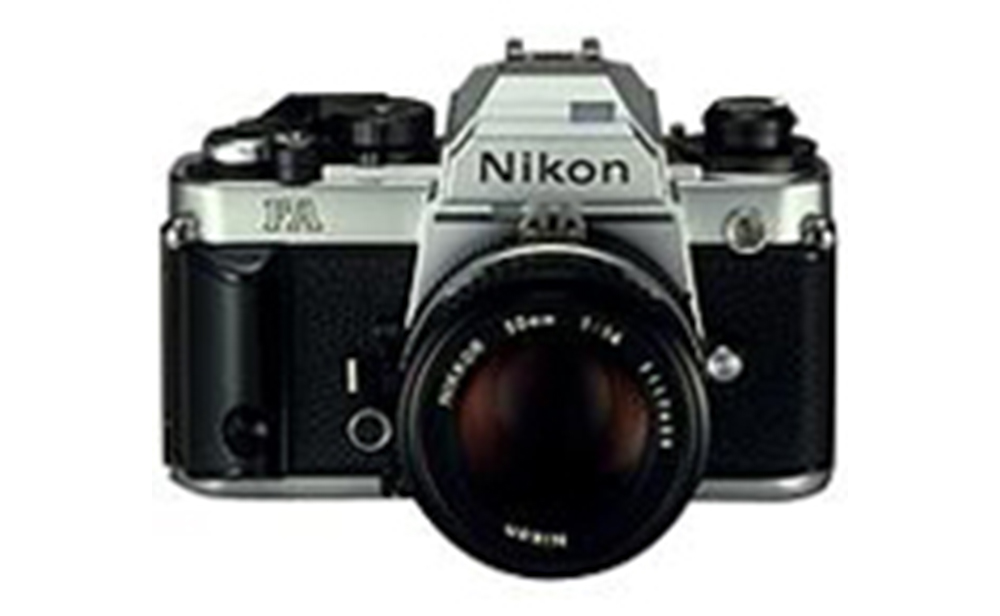
In September of 1983, Nikon released the Nikon FA.
This featured something that had been under development for some time --- a matrix metering system.
The traditional center-weighted metering system was still popular for its consistent results, but there were some gripes. Backlight compensation, for example, required considerable guesswork as even experienced users made errors in judgment at times.
With the Nikon FA's matrix metering system, however, the finder image was divided into five distinct metering areas. The ratio of light to dark is measured for each area individually and a microcomputer(CPU) analyzes data to calculate the optimal exposure.
Of course, limitations in film latitude precluded this design from being the perfect solution, but in most cases the FA was praised for its ability to "handle almost any situation very well".
Even professionals trusted it because metered exposures were "close to those based on years of experience".
The center-weighted metering of the F3, on the other hand, was closer to a spot meter, and better suited to determining precise exposure for specific subjects. This required experience in judging precisely where in the finder image to measure. Thus, there grew a considerable demand for Nikon to develop a "convenient, reliable matrix metering system in the F3" as well.
As a result, two new targets were defined for the F3 --- an enhanced shutter speed and metering system.
The development of an AF SLR
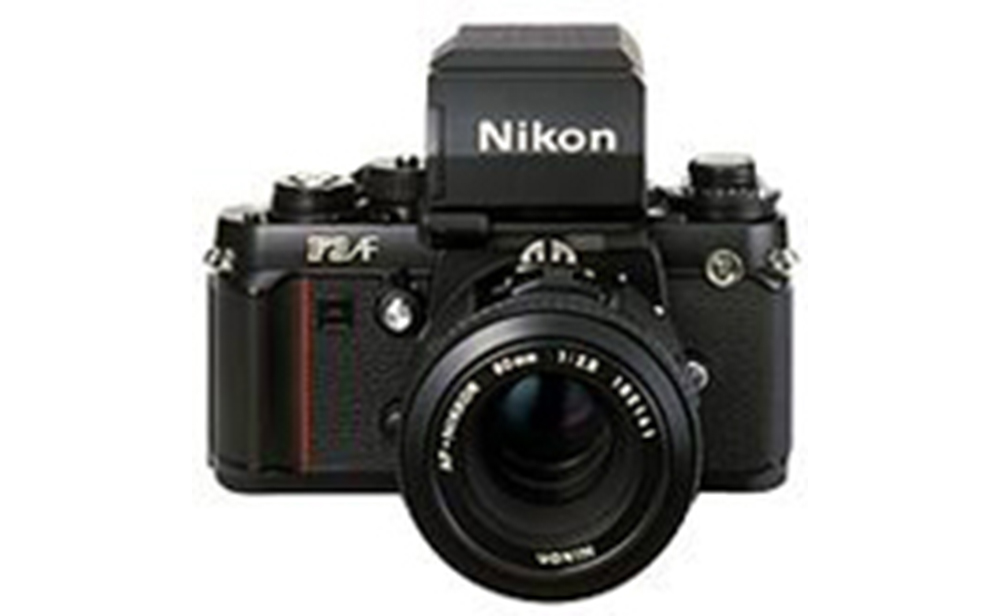
Now let's take a look at autofocus technology for single-lens reflex (SLR) cameras. This had been under development in parallel with matrix metering, and finally reached the actual test stage.
The results of the trial shots taken by the engineers were highly promising :
- 1.The TTL phase difference detection method sensed the degree to which the image was out of focus.
- 2.The new technology delivered excellent performance even in continuous photography of moving subjects --- which is difficult to do manually.
The Nikon F3AF, released in April 1983, featured this new technology.
From these experiences, the camera development department recognized that a "top-level SLR should feature an AF system in the future."
As we've seen, there had been a constant demand from users for Nikon to combine a high-speed shutter with matrixt metering.
The AF system itself, however, also had to be developed and extended. As a result, it became apparent that a full model change for the F3 was in the offing.
The F4 is not a high-grade version of a fully automatic point-and-shoot camera !
When you look at the specifications of the F4, including auto film advance/rewind, AF and automatic exposure, you might think its design is influenced by the development of full-auto lens shutter cameras.
It is certainly understandable that some photographers believed that "the Nikon F series is being developed under the same concept as a decision-free camera."
However, this was not the case. The actual development concept for the F4 was this: make a high-end SLR camera that produces the finest quality pictures possible. Of course, development concerns took into account the analysis of current and possible future technological advances.
The first step --- build a better battery ?
The first problem Nikon addressed was how much reliance to place on the batteries. The priority issue of ultrahigh-speed shutters could be implemented through mechanical means.
But with the implementation of automatic exposure, however, this meant that the shutter should really be controlled electrically.
And since the matrix metering system requires a microcomputer(CPU), the electrical circuit had to be quite large.
When you add autofocusing needs to the design, an even larger circuit is called for.
But even if a purely mechanical system capable of functioning without batteries was used, then that would demand the duplication of certain elements in the electrical and mechanical systems, making it difficult to assure reliability.
Nikon engineers then realized it would vastly simplify design details to use only one system --- mechanical or electrical.
Wait, there's more !
Another point to be considered was the film advance / rewind mechanism.
The advance / rewind mechanism consumed the most battery power at that time.
Systems with motor drives required eight(8) R6 (AA) batteries for high-speed operation.
If the motor were built into the body to move the shutter and film directly, it would probably be able to drive the system with only four (4) batteries. While the result would be larger than a manual-wind camera, it would still be considerably lighter and smaller than the conventional body-plus-motor drive approach.
But even if this type of camera solved all the problems technically, how would customers receive it ?
The prior model, the Nikon F3, was designed to maintain a number of basic functions even without batteries, but it basically required batteries in order to function, and utilized electrical signals throughout, including for motor drive control.
As the years passed, comments from users changed from "I have to be able to take pictures even when the batteries go dead" to "Of course batteries are essential."
And almost all motor drives at that time were unusable without battery power to operate them.
As a result, a decision was made at a relatively early stage to use the internal motor design with a battery-drive approach.
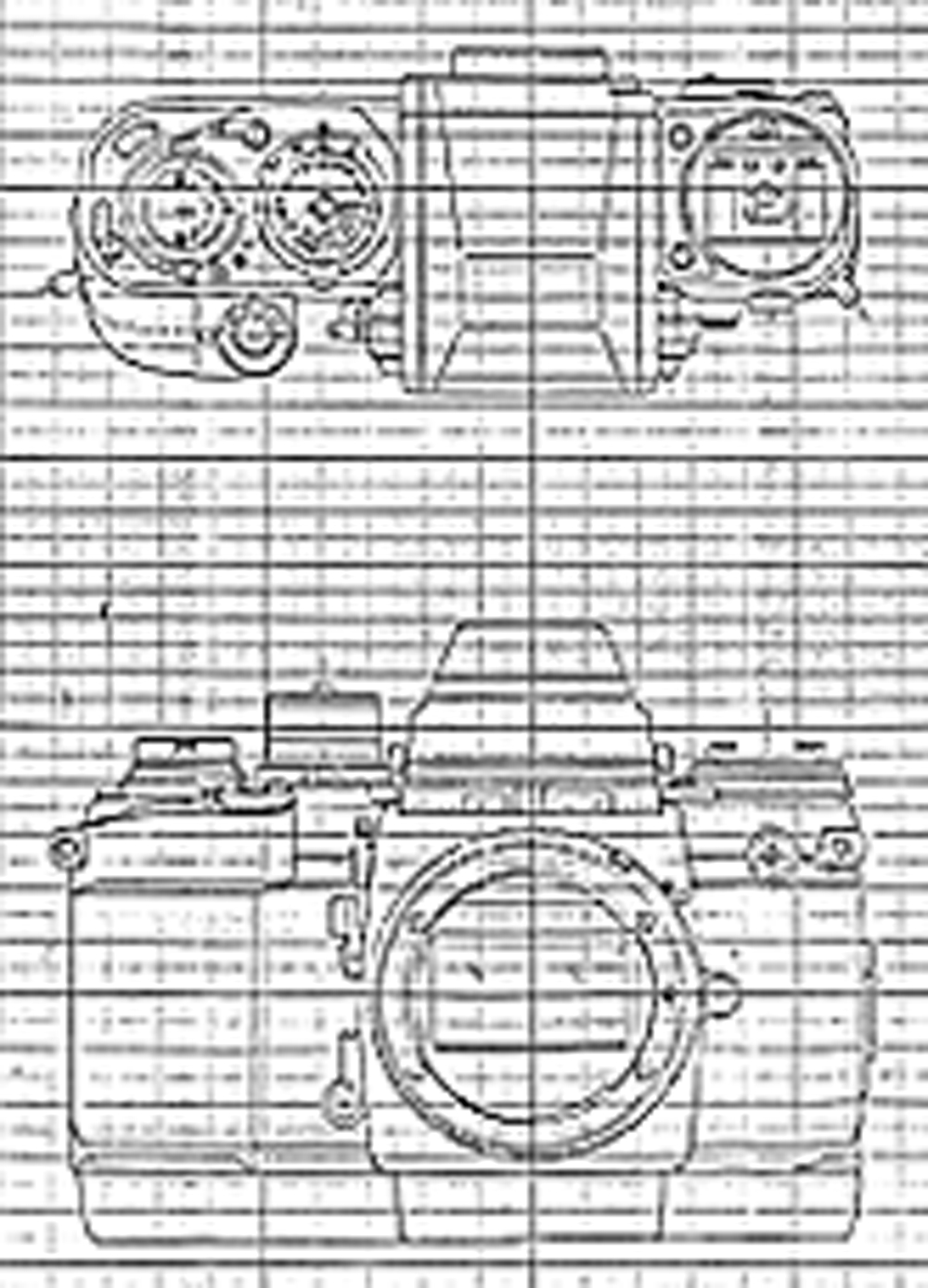
Given this, it would be necessary to have mechanical control of the shutter and certain other camera features without the use of the rest of the camera.
For extra-long exposures, however, a mechanical method of opening the shutter was provided to reduce battery drain, even though the design used electrically operated shutters.
The internal microcomputer(CPU) used for matrix metering was ideal for overall camera function control. In this way, the design philosophy of the "internal-motor microcomputer (CPU) controlled SLR" took shape.
Autofocusing and its special requirements
The problem now had to do with the autofocusing (AF). Since AF technology had not yet spread throughout the market, there was little customer demand, unlike the prior problem. A number of proposals were developed, including :
Omitting the AF feature for the time being
Measuring the focusing distance with an interchangeable finder
Adding a detachable AF unit to the base
Internalizing the AF unit into the base
Of these, technical necessity led the engineering team to select the internal base-mount design because of the superior precision that it provided.
A detachable design would have been quite difficult technically, so there was also a proposal to release two models, one for each customer group: the "F4AF" with internal AF, and the "F4MF" without AF.
There were many different opinions and much debate and discussion within Nikon.
Even if the two-model approach were adopted, there would also be the question of whether the "F4MF" without AF would be identical to the other model in all other respects, or if it would be developed later as a separate design.
Eventually a decision was reached to use an internal AF, based on the assumption that the professional and advanced amateur users of the future would want AF.
In sum ......
This article has concentrated on a cross-section of the F4's development at a certain period of time, and though it may appear that it merely incorporated the specifications of the full-auto camera without modification, this is not the case.
In fact, the current F4 camera was developed through a succession of questions such as "what type of camera is needed ? " and "what is the optimum camera system ? "
The advanced technical challenge of the F4 camera was evident in a number of places, but this thorough and determined approach was only natural given Nikon's attitude toward camera-making --- strive for the best.
If only looked at through this stance alone, the F4 is unique in that other AF SLRs were developed from a basic desire to create or fill a product niche.
The F4 is a joint product of Nikon and its customers
The model changes of previous high-end Nikon cameras have always been based solidly on user feedback about current models. At the same time, Nikon Corporation has always been committed to creating the best high-end cameras.
When the F4 is examined from this point of view, the specifications are perfectly in line with the comments and requests of our customers, and at the same time, new Nikon technology such as AF innovations are incorporated in an exciting blend of time-proven and new technologies.
By the way, it is very interesting that Nikon's latest flagship model, the F5, was developed to satisfy the specific demands of photographers regarding AF.
However, the overall degree of improvement was far greater than the original customer demand especially regarding exposure measurement.
In other words, the developmental approaches behind the F4 and the F5 are quite different --- whereas exposure measurement improvements with the F4 were customer-driven, with the F5, it was AF innovations that were customer-driven.
But both Nikon cameras were designed with the same goal in mind --- to create SLRs that perform to the world's highest standards.
Note
This issue first appeared in "Nikkor Club Quarterly" magazine , published by the Nikkor Club, and was revised for Nikon's webpage.
Products, brands and companies names are trademarks or registered trademarks of their respective companies.
Camera Chronicle
Archives of corporate history subject matter related to Nikon cameras, including rare materials, as well as product photos of cameras and lenses.
